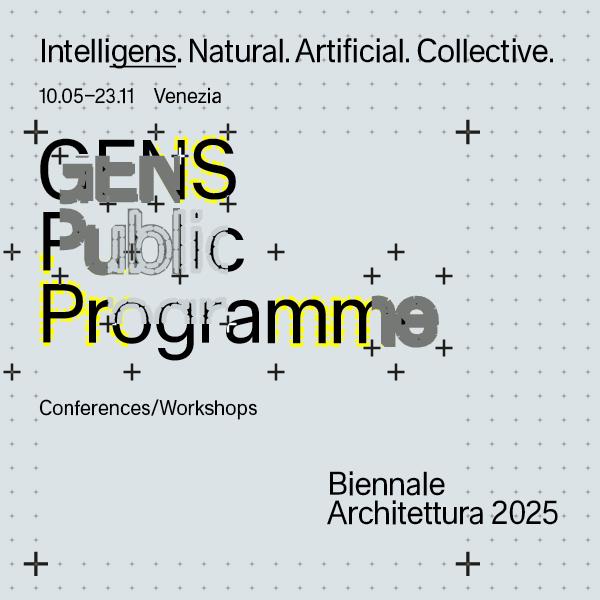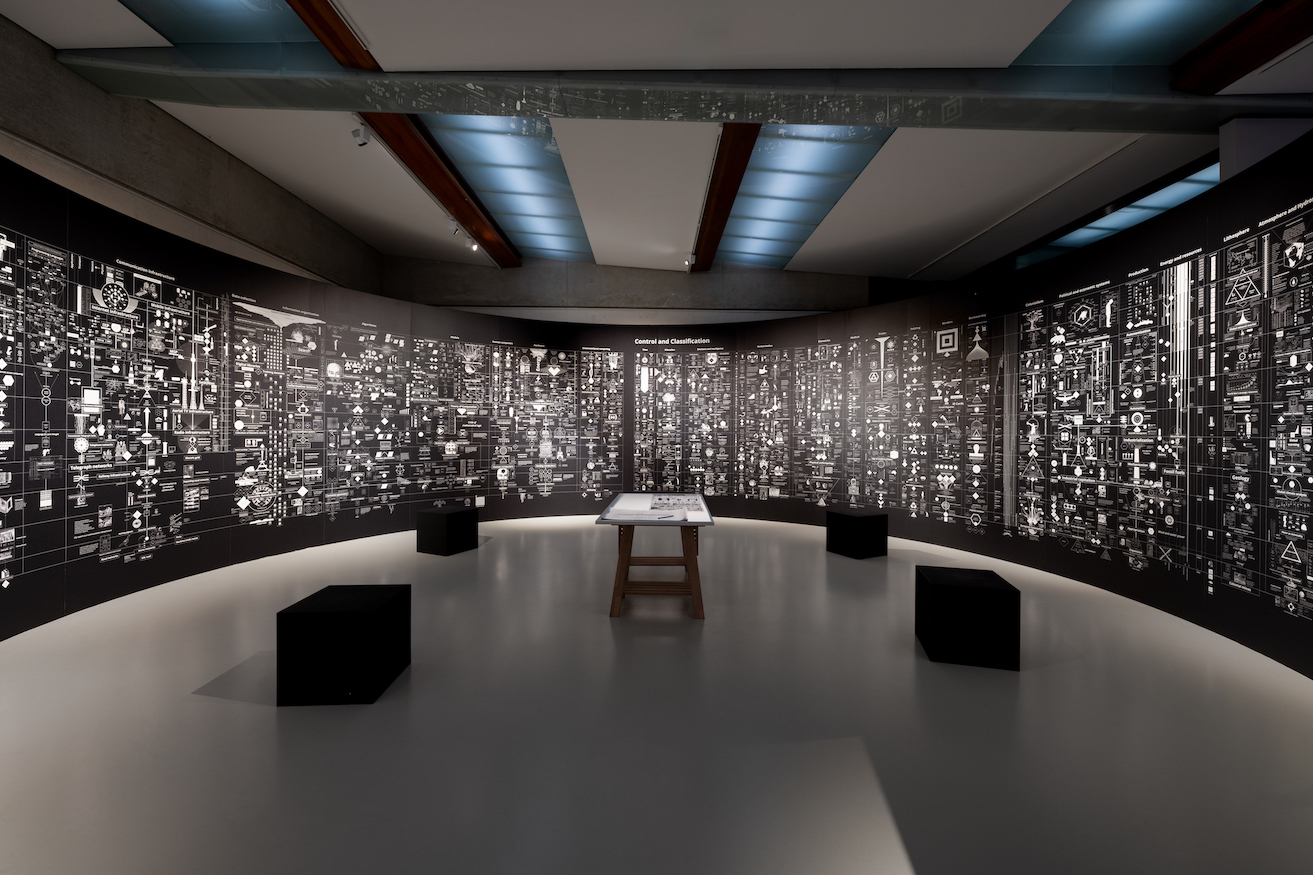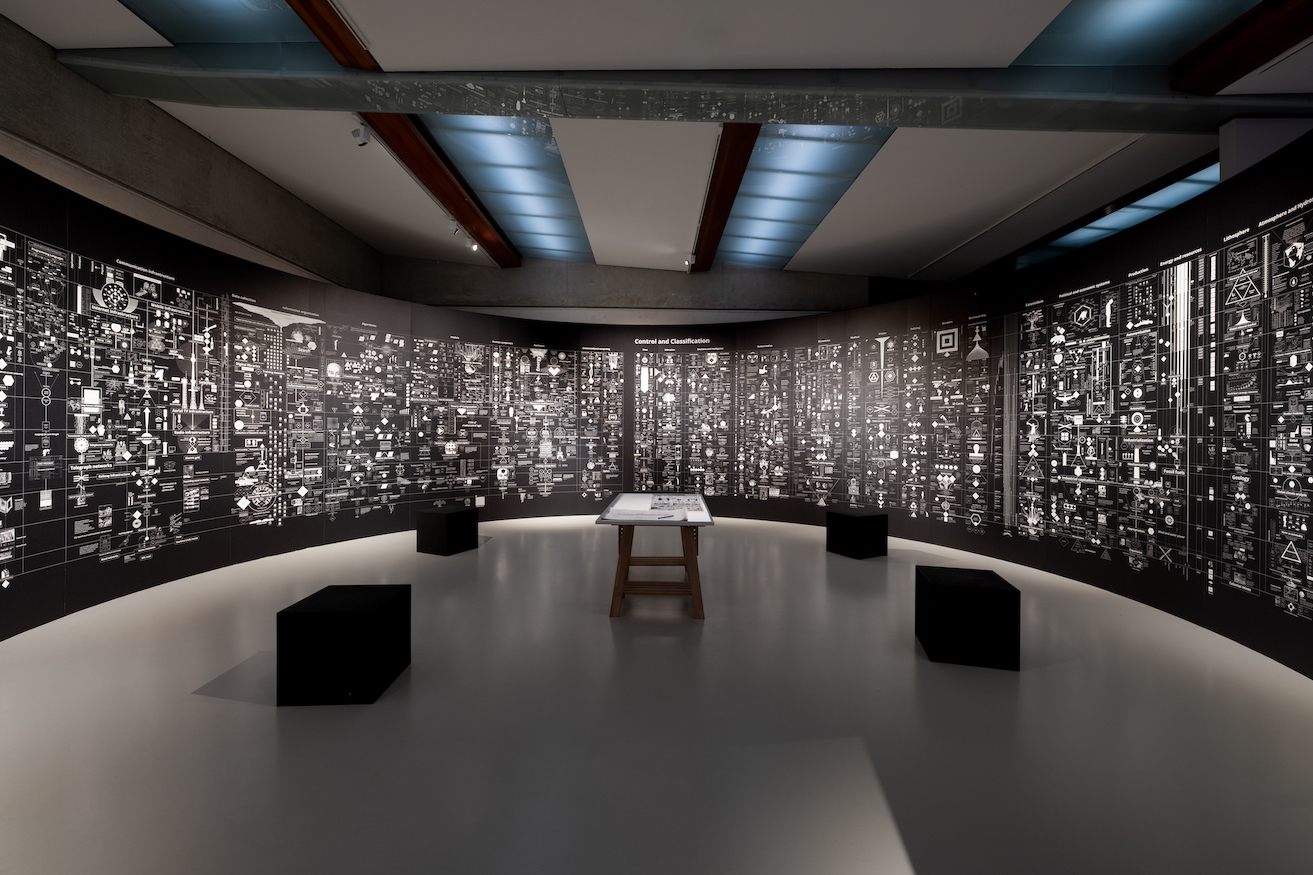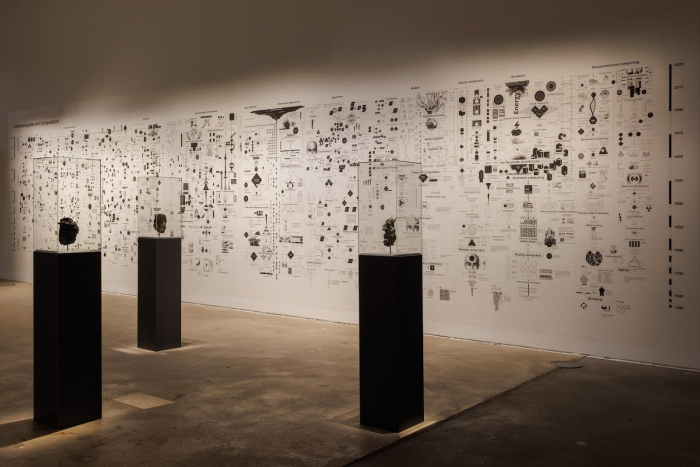“Building the Blueprint of Power: Unveiling the Architettura 2025 at La Biennale di Venezia”
As the world grapples with the complexities of modernity, the intersection of technology, architecture, and power has never been more poignant. The Biennale Architettura 2025, set to take center stage at La Biennale di Venezia, promises to be a thought-provoking exploration of the intricate relationships between these forces. Titled “Calculating Empires: A Genealogy of Technology and Power Since 1500”, this year’s exhibition invites us to embark on a fascinating journey through the centuries, tracing the evolution of empires and the role of technology in shaping their rise and fall.

Building a More Equitable Future

At the heart of the Biennale Architettura 2025 lies the exhibition “Calculating Empires: A Genealogy of Technology and Power Since 1500,” a thought-provoking installation that delves into the intricate web of technological advancements and their impact on society. As we explore this exhibit, it becomes clear that understanding the past is crucial in shaping a more equitable future. In this section, we will examine how “Calculating Empires” provides valuable insights into the roots of current technological inequalities and discuss the potential for using this knowledge to advocate for more equitable and sustainable technological development.

The Importance of Understanding the Past
By tracing the evolution of technology and its entanglements with power and colonialism, “Calculating Empires” offers a rich history of technology today. This large-scale visual manifesto makes visible the invisible both in space and in time, providing a comprehensive overview of the forces that have shaped our modern world. As we navigate this complex landscape, it becomes evident that the roots of current technological inequalities lie deep in history.
The exhibition’s interactive elements, including the large-scale floor work and two handmade books, invite visitors to engage with the narrative and make their own annotations and notes. This participatory approach encourages a deeper understanding of the past and its relevance to our present. By examining the historical context of technological advancements, we can gain valuable insights into the mechanisms that perpetuate inequality and identify potential areas for change.

Challenging the Status Quo
As we navigate the complexities of technological development, it becomes clear that the status quo is often inadequate for addressing the pressing issues of our time. “Calculating Empires” challenges us to redefine our relationship with current socio-technical structures, asking how we got where we are today and where we might be going. By exploring the historical context of technological advancements, we can identify areas where we may be perpetuating inequality and develop more equitable and sustainable solutions.
The exhibition’s focus on the co-evolution of technical and social structures highlights the need for a more nuanced understanding of technological development. By acknowledging the intricate web of power dynamics and historical context, we can develop more informed and effective strategies for addressing the challenges of our time.
Empowering Players
As we consider the potential for using the insights from “Calculating Empires” to advocate for more equitable and sustainable technological development, it becomes clear that games can play a powerful role in empowering players to become agents of change. By incorporating elements of critical thinking and historical context, games can challenge players to rethink their relationship with technology and its impact on society.
Games can leverage the insights from “Calculating Empires” to provide players with a deeper understanding of the complex mechanisms that perpetuate inequality. By engaging with these narratives and exploring the historical context of technological advancements, players can develop a more nuanced understanding of the challenges facing our world and identify potential areas for change.
“Calculating Empires” in the World of Games
As we explore the world of games, it becomes clear that the insights from “Calculating Empires” offer a wealth of potential for game designers. The exhibition’s focus on the co-evolution of technical and social structures highlights the need for a more nuanced understanding of technological development, providing a rich source of inspiration for game developers.
Inspiration for Game Design
The historical context and interactive elements of “Calculating Empires” offer a wealth of inspiration for game designers. By incorporating elements of critical thinking and historical context, games can challenge players to rethink their relationship with technology and its impact on society.
Games can leverage the insights from “Calculating Empires” to provide players with a deeper understanding of the complex mechanisms that perpetuate inequality. By engaging with these narratives and exploring the historical context of technological advancements, players can develop a more nuanced understanding of the challenges facing our world and identify potential areas for change.
Interactive Exploration of History
The interactive elements of “Calculating Empires” offer a unique opportunity for game designers to create immersive and engaging experiences that allow players to delve deeper into the historical narratives presented in the installation.
By incorporating interactive elements, games can provide players with a more immersive and engaging experience, allowing them to explore the historical context and develop a deeper understanding of the challenges facing our world.
Empowering Players
As we consider the potential for using the insights from “Calculating Empires” to empower players to think critically about technology and its impact on society, it becomes clear that games can play a powerful role in this process.
Games can leverage the insights from “Calculating Empires” to provide players with a deeper understanding of the complex mechanisms that perpetuate inequality. By engaging with these narratives and exploring the historical context of technological advancements, players can develop a more nuanced understanding of the challenges facing our world and identify potential areas for change.
Golden Lion for Best National Participation
The Biennale Architettura 2025 awards the Golden Lion for Best National Participation to the Kingdom of Bahrain for its pavilion, which offers a viable proposal for extreme heat conditions. The pavilion uses traditional methods of passive cooling typical of the region and reminiscence of wind towers and shaded courtyards.
The Golden Lion for Best National Participation also recognizes the creation of a space for exchange, negotiation, and restoration in the pavilion “Opera aperta” by the Holy See. This special mention invites the visitor to participate in the production of meaning, recalling a book by Umberto Eco published in 1962.
The Golden Lion for Best National Participation also acknowledges the pavilion by Great Britain, which reveals architecture as a dialogue between extraction and inequality, environmental degradation, and reparation and renewal.
Special Mentions
The Biennale Architettura 2025 also awards special mentions to several participations, including the pavilion “Alternative Urbanism: The Self-Organized Markets of Lagos” by Tosin Oshinowo, which offers a glimpse into markets of processing waste of industrialized economies.
The special mention recognizes the creation of a space for cultural exchange in the pavilion “Opera aperta” by the Holy See, which invites the visitor to participate in the production of meaning.
The special mention also acknowledges the pavilion by Great Britain, which reveals architecture as a dialogue between extraction and inequality, environmental degradation, and reparation and renewal.
Awards and Recognition
“Calculating Empires: A Genealogy of Technology and Power Since 1500” has won several awards and recognitions, including the Golden Lion for the best participation in the 19th Exhibition Intelli gens. Natural. Artificial. Collective., the Silver Lion for a promising participation in the 19th Exhibition Intelli gens. Natural. Artificial. Collective., and the Boghossian Foundation International Prize in 2024.
The exhibition has also been recognized by the European Commission’s 2024 Grand Prize for Artistic Exploration in Science, Technology, and the Arts.
Future Exhibitions
“Calculating Empires: A Genealogy of Technology and Power Since 1500” will be exhibited at several locations around the world, including LABoral in Gijón, Spain, Mori Art Museum in Tokyo, Japan, Design Museum of Barcelona in Barcelona, Spain, Jeu de Paume in Paris, France, and Lisbon Triennale in Lisbon, Portugal.
The exhibition will be on display until October 2025, providing an opportunity for audiences to engage with the historical context and interactive elements of the installation.
Previous exhibitions of “Calculating Empires” have taken place at Fondazione Prada in Milan, Italy, KW Institute in Berlin, as part of the Poetics of Encryption exhibition, Ars Electronica Festival in Linz, Austria, and Rijksmusuem Twenthe in Enschede, Netherlands.
Technical Specifications
“Calculating Empires: A Genealogy of Technology and Power Since 1500” is an immersive physical installation that can be staged in different formats. The minimum size of the work is 24 meters in length, and 3 meters in height.
The installation can be staged as a circular work, or as two wall murals facing each other. It can also be installed as a large-scale floor work.
The exhibition includes two large format handmade books, one for the themes of Communication and Computation, and the other for Control and Classification. The books are printed on semi-transparent paper, allowing visitors to read the details up close and make their own annotations and notes.
Biog
Kate Crawford and Vladan Joler are the creators of “Calculating Empires: A Genealogy of Technology and Power Since 1500.” The exhibition is supported by The Sloan Foundation, as part of the Knowing Machines Project, The Robert Bosch Academy, and Fondazione Prada.
Crawford and Joler’s work has been recognized with several awards and nominations, including the Golden Lion for the best participation in the 19th Exhibition Intelli gens. Natural. Artificial. Collective., the Silver Lion for a promising participation in the 19th Exhibition Intelli gens. Natural. Artificial. Collective., and the Boghossian Foundation International Prize in 2024.
The exhibition will be on display until October 2025, providing an opportunity for audiences to engage with the historical context and interactive elements of the installation.
Conclusion
As the curtains closed on the 18th International Architecture Exhibition, Biennale Architettura 2025, we are left to ponder the profound implications of “Calculating Empires: A Genealogy of Technology and Power Since 1500 – La Biennale di Venezia.” Throughout this thought-provoking journey, we delved into the intricate web of technological advancements, imperial ambitions, and the unyielding quest for power. From the rise of modern nation-states to the dominance of digital empires, the exhibition masterfully unraveled the complex genealogy of technological progress, exposing the dark underbelly of human ingenuity and the unrelenting drive for control.
The significance of this exhibition lies in its unflinching examination of the intricate relationships between technology, power, and empire-building. By tracing the genealogy of technological advancements since 1500, the Biennale Architettura 2025 offers a stark reminder that the boundaries between innovation and exploitation are often blurred, and that the pursuit of progress can quickly devolve into the exercise of dominance. As we navigate the complexities of the 21st century, this exhibition serves as a timely warning, urging us to reexamine our relationship with technology and to consider the long-term consequences of our actions.
As we look to the future, the implications of “Calculating Empires” are both far-reaching and unsettling. In an era where technological advancements are accelerating at an unprecedented pace, we are confronted with the daunting prospect of a world where the lines between human and machine are increasingly blurred. Will we continue down the path of unchecked technological progress, or will we seize the opportunity to redefine the relationship between innovation, power, and humanity? The choice is ours, but one thing is certain: the future will be shaped by the decisions we make today. “The empire of technology will soon be revealed for what it is – a fragile, ephemeral construct, held together by threads of code and the whispers of our collective imagination.” The question is, will we choose to tear it down, or will we be its unwitting architects?